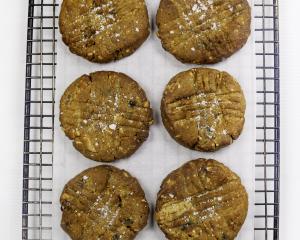Daniel Pfyl, hospitality management lecturer at Otago Polytechnic, shares some professional techniques to make your cooking easier. In this series he demonstrates warming winter dishes.
Boeuf Bourguignonne
Serves 4-6
1 kg stewing beef
2 Tbsp oil
150g mirepoix (finely chopped carrot, onion, and celery)
2 cloves garlic
50g bacon lardons (small strips of streaky bacon)
50g flour
1 Tbsp tomato paste
250ml red wine
200ml beef stock
1 bouquet garni (a bayleaf, a clove, a few peppercorns and some parsley stalks tied in a muslin cloth)
To garnish:
150g bacon lardons
250g button mushrooms, cut in half unless very small
150g small or pickling onions
100g butter
A casserole like this that is cooked in the oven can be made in a heavy cast iron enamelled pot or a casserole, or you could cook it in a slow cooker
Use stewing beef which is suitable for long cooking such as shin, chuck, or blade, which are cheaper cuts with connective tissue that melts into the stew. Trim off any fat and cut meat into cubes.
1 Dry meat with a paper towel if necessary. Season with salt and pepper and toss in a little flour. This will help the meat colour.
2 Heat a pot or frying pan and add oil. When it is hot, brown the cubes of meat in batches. The meat should be in a single layer.
3 Don't overload the pan or it will stew instead of brown. Let it sit and sizzle so it caramelises before turning or stirring. If you move it too soon, it will stick. It is best to turn over the pieces with tongs.
4 When the meat is brown on each side but not blackened or burnt, remove, reheat the pot, add more oil if necessary and brown the next batch. If the pot gets too brown, deglaze it with a little red wine or stock. Let it bubble up as you stir up the tasty brown bits on the bottom of the pan, then strain the jus over the browned meat.
5 When all the meat is browned, heat a little more oil and stir in the mirepoix - the finely chopped onion, carrot and celery, and the bacon. Let it cook down a little - this is the flavouring for the sauce.
6 While it is cooking, tie up the bayleaf, a clove, a few peppercorns and some parsley stalks in a piece of clean muslin or cheesecloth.
7 When the vegetables have cooked a little, stir in the tomato paste, then add a little wine to deglaze the pan. Let it reduce, then add a couple of tablespoons of flour to thicken and stir in well. When the flour is incorporated, add the stock slowly, stirring to incorporate it without lumps.
8 Just before it comes to the boil, add the meat and juices and the bouquet garni.
9 Stir, and bring to a simmer, put on the lid.
10 Now it's ready to go in the oven at 160degC fanbake for 1 to 2 hours.
For cooking in the oven, the liquid should barely cover the ingredients. If you wish to cook it in a slow cooker, heat the cooker first, use less liquid and leave it to cook for four to six hours.
To finish the boeuf bourguignonne:
1 Prepare the garnish by peeling and simmering the onions in salted water.
If using pickled onions, soak them in water to get the vinegar out. The onions are done when they offer little resistance when the point of a knife is inserted.
Cut the onions in half, depending on size.
2 Heat butter in a pan, add the bacon lardons (small strips of streaky bacon) and cook briefly. Add the mushrooms cut in half and cook lightly until golden, stirring from time to time. When almost done, add the blanched onions.
Season to taste, but be careful adding salt as the bacon and stock in the stew will both be salty already.
Serve the stew topped with the bacon, mushrooms, onions and finely chopped parsley.
It can be served with mashed potato. For rich, special-occasion mashed potato, mash 500g potato with 100ml cream and 100g butter, and season with salt, pepper and a grinding of nutmeg.
If you would like to request to a particular technique we haven't already shown, please let us know. Write to: Cooking 101, Editorial Features, Otago Daily Times, PO Box 181, Dunedin, or email odt.features@odt.co.nz with cooking 101 in the subject line.
More information on cooking from the Otago Polytechnic can be found on www.otagocookeryl4.blogspot.com












